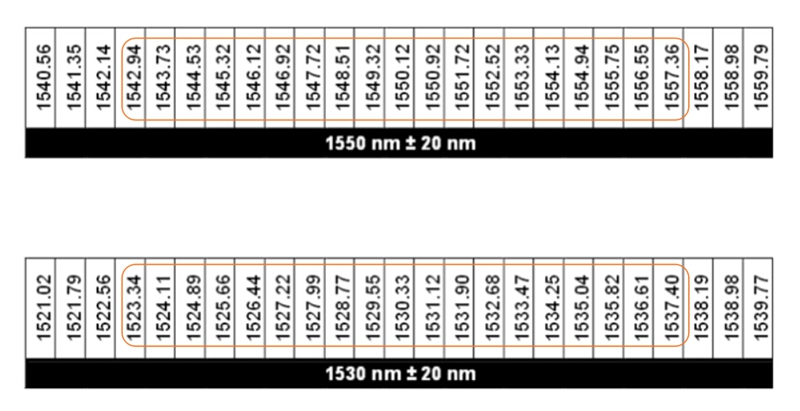Can the Hybrid CWDM-DWDM System Work for Higher Capacity?
When facing the capacity-hungry issue, have you ever hesitated over which WDM system should be choose? As the CWDM system is a more economical solution for limited expanding capacity while the expensive DWDM solution enables much higher capacity, which one should be chose is really a tough decision. In order to solve the issue, can we deploy a Hybrid CWDM-DWDM system, for not choosing a wrong solution to increase the network capacity? Thereby, both the bandwidth shortage with CWDM solution or the potential bankruptcy with DWDM solution can be avoided. Let’s seeking the answer.
Can the Hybrid CWDM-DWDM System Work?
Can the Hybrid CWDM-DWDM system work for higher network capacity? The answer is yes. In fact, it is an ideal solution for boosting the network capacity, which is designed with merging DWDM and CWDM traffic seamlessly at the optical layer, taking full use of the WDM technology. In a hybrid CWDM-DWDM system, more channels can be added to deal with the limited capacity and reach in a CWDM system. That’s to say, the hybrid CWDM-DWDM system utilizes the DWDM technology to empower CWDM system, by integrating CWDM and DWDM equipment, which offers true pay-as-you-grow capacity growth and investment protection.
In short, the hybrid CWDM-DWDM system is a simple, plug-and-play option that enables more DWDM channels interleaved with the existing CWDM channels, for transmitting more data signals. It gets the utmost out of CWDM and DWDM technologies in a single system that greatly reduces the cost, simplifies the installation and keeps the system flexibility for bigger network capacity.
How to Build a Hybrid CWDM-DWDM System?
In general, a normal complete optical connection can be simply done by using a length of fiber patch cable to connect two fiber transceivers and then separately inserting the two transceivers into the ports of two switches. While in a hybrid CWDM-DWDM system, both the CWDM Mux Demux and DWDM Mux Demux should be added offering multiple channels to multiplex and demultiplex the signals. Here offers a typical 44 channel hybrid CWDM-DWDM system information for your reference.
From the figure, we can learn that the original CWDM system uses two 8 channel CWDM Mux Demux with wavelengths from 1470 nm to 1610 nm (20nm channel spacing). In order to add more channels for transmitting larger data signals, two pairs of DWDM multi-channel Mux/Demux are deployed separately under the pass band of the existing CWDM filters. In principle, deploying the DWDM multi-channel Mux/Demux in the 1530nm channel can create 25 100 GHz spaced DWDM channels. However, only 19 DWDM channels circled in the following figure are suitable to be added in the hybrid CWDM-DWDM system. It is also the same to the 1550 channel. Hence, this hybrid CWDM-DWDM system totally offers 6 CWDM channels and 38 DWDM channels with less deployment cost but easier installation.
Conclusion
If you come across the capacity-hungry issue and can’t make the decision about which WDM system should be choose for increasing your network capacity, you are highly recommended to deploy a hybrid CWDM-DWDM system. As an economical and future-proofing solution, the hybrid CWDM-DWDM system can completely deal with the issue of bandwidth shortage when building a CWDM system and avoid the potential bankruptcy for a DWDM system. You can just deploy a CWDM system first. Once the capacity the CWDM system offers can’t meet your requirement, you can add DWDM equipment in for more channels to transmit signals. All in all, the hybrid CWDM-DWDM system is an ideal choice that not only costs less for deployment but keeps the flexibility to increase the network capacity.

